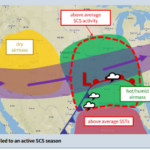
The quality of small commercial underwriting data drives insurers’ success in two significant areas: Improved premium adequacy and better experiences for customers and producers.[1] It’s no surprise that 71 percent of insurers noted ongoing or planned investments in enhanced underwriting analytics.[2]
The alternative may be settling for inferior data—not accurate enough, inadequately tested or validated, or noncompliant with state regulations. The results can include premium leakage due to misclassified risks, adverse selection, compliance issues, or inefficient workflows that subject underwriters to hours of validating and correcting bad information.
What to look for in a small commercial underwriting data provider
Six qualities should be top of mind when vetting prospective data partners.
- First-rate data governance. The system should include policies that, among other things, govern how data is:
- Verified and maintained for quality
- Secured
- Shared throughout an organization (i.e., control of access privileges)
- Created
- Archived and deleted
You should be able to trust that the data you access for underwriting is properly acquired, secured, and managed and that it meets applicable statutes and regulations, especially as they change. And the data should be traceable for compliance and internal review purposes.
- Relevant, timely insights from diverse data sources. High-quality small commercial underwriting data may be proprietary to the provider, developed from unstructured sources, or secured from public records and third-party providers.
- Proprietary data adds value when it provides relevant information your competitors may not have for classification, pricing, or risk evaluation.
- Unstructured data, if analyzed correctly with tools such as artificial intelligence and machine learning, can take information such as business reviews on social media, photos, and other text documents and transform them into immensely valuable underwriting intelligence.
- Third-party data, such as public records, can yield important firmographic and classification information for insurers. But a data provider should deeply understand these public sources, their potential pitfalls, and how to properly curate and cleanse the data.
- A commitment to data accuracy across sources and models. Delivering accurate data requires continuous verification, validation, and testing across all sources—proprietary, unstructured, or third-party. Data used to train and test models needs to meet the unique underwriting requirements for each class of small commercial insurance to provide lift where it matters. When underwriters trust the data, they can use it more confidently.
- A commitment to data completeness. Firmographic data can be essential to time-saving application prefill. The two key metrics are:
- Hit rate: How often can a provider successfully locate businesses in its dataset? But a high hit rate may mean little if detail is lacking.
- Fill rate: How much of an application can be accurately filled with the data provided? It’s worth noting that a lower fill rate across a broader set of fields can be more useful than 100 percent of only a few fields.
The ideal is both a high hit rate and a high fill rate—and enough data to provide holistic insights into an applicant, including property exposures, management characteristics, and industry-specific claims drivers. Complete data is granular enough to provide deep insights across the policy life cycle.
- Domain expertise. Actionable underwriting data on small commercial risks requires experienced insurance experts and data scientists. Domain expertise spans the underwriting data life cycle: Sourcing, compliance monitoring, and testing and validation. Building successful analytical underwriting models requires an understanding of which data points matter.
- Support at every step. Can your data provider meet you anywhere on your digital journey with the expertise and experience to integrate with your IT infrastructure? Do you get onboarding, training, and continuous support when needed? From APIs and documentation to more consultative support, your provider should be flexible enough to serve you with more than just a data pipeline.
Verisk can be the data and analytics partner for small commercial insurers of many sizes and stages in their business development, delivering actionable underwriting information. LightSpeed® Small Commercial can help identify the majority of risks that qualify for straight-through processing—and flag those that need further underwriting review.
Download, Hit the gas – How to find high-quality data providers to accelerate small commercial underwriting, to explore the challenges of data acquisition and practical, digital solutions in greater depth.
By Gavin Mills ARM, CPCU
[1] 2021 P&C Underwriting Survey, Accenture & The Institutes < https://riskandinsurance.com/wp-content/uploads/2021/12/TI-Accenture_PC_Underwriter_Survey-_vf.pdf >, accessed on March 22, 2022.
[2] Ibid



















 Trigger Warning: Cyber Policy Wordings to Impact Coverage for Tech Outage
Trigger Warning: Cyber Policy Wordings to Impact Coverage for Tech Outage  Middle Manager Is the Middle Child
Middle Manager Is the Middle Child  ‘Don’t Rock the Boat,’ Brokers Advise California’s Homeowners in Crisis
‘Don’t Rock the Boat,’ Brokers Advise California’s Homeowners in Crisis  KCC: Frequent SCS Activity Emphasizes Need for Latest Modeling Tech
KCC: Frequent SCS Activity Emphasizes Need for Latest Modeling Tech 




